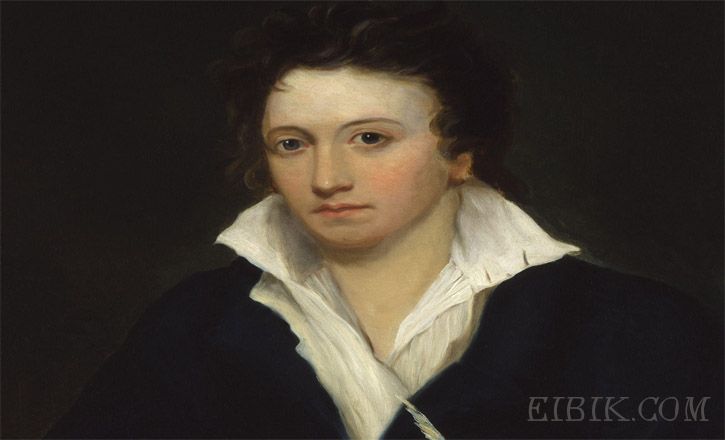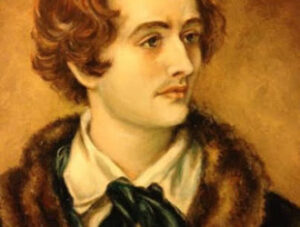Born: October 31, 1795, London, England
Died: February 23, 1821, Rome, Italy
English poet
Table of Contents
Synopsis
John Keats was an English romantic poet. He was one of the chief figures of the second generation of romantic poets, with Lord Byron and Percy Baishe Shelley. Despite publishing for only four years before he died of tuberculosis at the age of 25.
Although his poems were generally not well received by critics in his lifetime, his reputation increased after his death, and John Keats became one of the most beloved of all English poets in the late 19th century.
He had a significant influence on various poets and writers. Jorge Luis Borges says that his first encounter with Keats’s work was one of the most significant literary experiences of his life.
Keats’s poetry is characterized by sensory imagery, especially in the notable Odere series. This is representative of romantic poets, as they emphasize natural representation to enhance extreme emotions.
Today his work and letters are some of the most famous and most analytical in English literature. Keats’ most acclaimed jobs are “Odd to Nightingale,” “Sleep and Poetry,” And the famous sonnet “On the first looking in Chapman’s Homer.”
John Keats Early life
A respected English poet, with a short life span of just 25 years. John Keats was born on October 31, 1795, in London, England. He was the oldest of four children of Thomas and Frances Keats.
Keats lost his origins at an early age. He was eight years old when his father, who was a stable guard, Was killed after being trampled by a horse. The father’s death had a profound impact on the boy’s life.
In a more abstract sense, it has shaped Cats’ burden of understanding for the human condition, as both his enjoyment and loss. The tragedy and others helped ground Keats’s later poetry – which found its beauty and greatness from human experience.
In a universal sense, the family’s financial security disrupted by Kitts’ father’s death. His mother, Frances, seemed to have introduced a series of missteps and mistakes after her husband’s death; She remarried quickly and just as quickly lost a good deal of his family’s wealth.
After her second divorce,
-Frances left the family and left her mother in care. He eventually returned to the lives of his children, however, and his life sprang up. In the early 1810s, he died of tuberculosis.
During this time, the kits found solace and comfort in art and literature. At Enfield Academy, where he started shortly before his father’s death, Keats proved to be an avid reader.
He also became close to John Clark, the headmaster of the school. Who acted as a kind of paternal figure to the orphan student and encouraged Keats’ interest in literature. Back home, Keats’ great-grandmother took control of the family’s finances. Which at that time considered sufficient, handed over to a London businessman by Richard Abbey.
Expressing concern over protecting family finances, Abbey found himself reluctant to spend much of it on the children of Keats. He refused to arrive at how much money the family had, and in some cases, it was utterly fraudulent.
There is some controversy over who decided to get Keats out of Enfield. But in the early 1810s, Keats left school to study to become a surgeon. He eventually studied medicine at a hospital in London, and in 1816 became a licensed apothecary.
John Keats Early career
But Keats’ career in treatment never really stopped. Even when he studied medicine, Keats’ devotion to the arts and craftsmanship never stayed.
Through his friend Cowden Clarke, whose father was headteacher at Enfield, Keats met the publisher, Leigh Hunt of The Examiner. Hunt’s extremism and bite pen made him imprisoned in 1813 for the Libertine Prince Regent.
Hunt had a vision for talent and was an early supporter of Keats’s poetry and became his first publisher. Through Hunt, Keats introduced to a world of politics that was new to him. And greatly influenced the page he was on. In honor of Hunt, the Keats wrote the Sonnet, “Written on the Day that Mr. Leigh Hunt Left Prison.”
In addition to making Keats stand as a poet, Hunt introduced the young poet to a group of other English poets, including Percy Baishe Shelley and Williams Wordsworth.
In 1817 Keats published his first friendship poem, using his new friend to publish John Keats’s poem. The following year, Keats published “Endymion,” a vast four-thousand-line poem based on a Greek myth of the same name.
Keats wrote the poem in the summer and autumn of 1817, committing to at least 40 lines a day. He finished the work in November of this year, and it published in April 1818.
Keys’ brave and bold style earned him nothing. But criticism from two of England’s most respected publications, Blackwood’s Magazine and the Quarterly Review. The attacks sparked intense criticism from Hunt and his young poet’s care.
The most shocking of these pieces came from Blackwood. Whose part, “Cockney School of Poetry,” shook up Keats and made him nervous about releasing “Endymion.”
John Keats Last Years
There is nothing more like a record of Keats’s poetry. Poems such as “Isabella,” “Lamia,” “St. Agnes of Hav,” and Hyperion and Woods published in the famous 1820 volume, giving an accurate measure of its powers. It appeared in July, during which time the keys damaged.
He became increasingly ill throughout 1819, and as early as 1820, the evidence for tuberculosis was evident. He apprehended that it was his death pass, and from that point on, sustainable work became impossible.
His friends, Brown, Hants, Brown, and his mother, nursed him year after year. Percy Baishe Shelley heard about his condition and offered him hospitality at Pisa, but Keats did not.
When Keats ordered south for the winter, Joseph Severn ventured to accompany him to Rome. They sailed in September 1820, and from Naples, they moved to Rome, where in early December, the Keats reunited. Saver’s tendency to end up faithfully, he died in Rome.
Letters
The significant authority of both Keats’s life and his poetic development found in his letters. This correspondence with his brother and sister, his close friends. And Fannie Brown gives the most intimate depiction of the admirable integrity of Keats’s character. And enables the reader to carefully follow the development of his thinking about poetry – his own and that of others.
His letters convey a profound thought, coupled with critical, sensitive, relentless critical response. Spontaneous, informal, deeply thoughtful, and deeply felt, this is one of the best letters written by any English poet. In addition to their interest in the commentary on his work, they have the right to independent literary status.
Reputation
It is impossible to say how much Keats lost in early death. His reputation grew steadily throughout the nineteenth century. Though William Holman Hunt, a pre-Raphaelite painter of the late 1840s, might refer to him as “this little-known poet.”
From Alfred, Lord Tennyson’s early work to Victorian-era decorative romantic verse, his influence found everywhere. His general emotional mood and the taste of his natural observation moments were much appreciated by the Pre-Raphaelites. Who both echoed his poetry spontaneously and portrayed it in their paintings.
Keats’s nineteenth-century followers thoroughly valued the more subtle aspects of his work. And it left mostly in the twentieth century to realize the full range of his technical and intellectual achievements.


